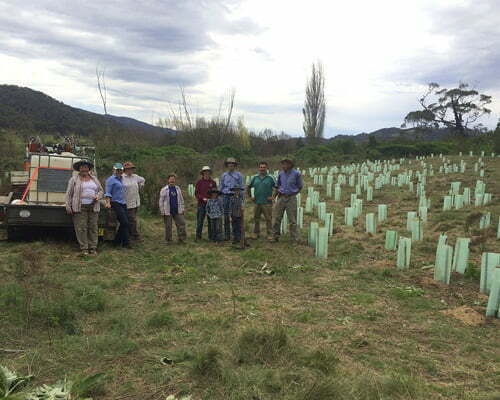We recently read this thought provoking article in The Conversation about how storing carbon could become part of a viable and productive farming system, we thought you might enjoy it too so have summarised the key points:
Currently, there are several competing forces putting pressure on Australian agricultural land. A growing global population is placing increasing demands on farmers. Meanwhile, the climate is changing; becoming warmer, and in many places drier too. This is in part due to agriculture, as it is currently a major contributor to greenhouse gas emissions. This is where we find the big problem: how do we continue to provide food and resources through agriculture without further contributing to greenhouse gas emissions?
Scientists from the CSIRO have come to the conclusion that one of the best ways for this to be achieved is by farming carbon. Carbon sequestration in land systems is a key way that Australia can meet it’s climate goals and help to manage climate change into the future.
So, how can this be achieved? It will primarily involve land use change and landholders storing carbon in trees and soils on their property. It is also vital that there are systems and support networks in place to enable landholders to make this change.
This is one of our key goals here at Rivers of Carbon – to support landholders in projects to restore farmland and riparian zones, which will have a long term positive impact on the environment. If you would like to know more about the work that we are doing, it is available on the Our Projects page. There have also been other suggestions about how to support landholders, including introducing a carbon price where landholders make money (often much more than from farming) from storing carbon in trees and soil.
It is important that there are conversations around these changes to consider potential trade-offs and challenges alongside potential benefits. Some potential challenges include the water requirements of trees, and the impact that land-use change might have on resources and productivity. These are challenges, but they can be overcome. Although trees do require more water than crops, careful water management will help to prevent problems in this area. In terms of resources, CSIRO researchers explain that:
“if we redouble our focus on productivity, by 2050 agriculture will produce more than today, even as farmland contracts” (The Conversation).
This is because less productive land will be better used as carbon sinks, while the most efficient agricultural land will be left in production. The CSIRO researchers believe that the potential to safeguard our environment into the future is a far greater benefit than any challenge faced.
We have included the short video from the CSIRO below is a clear illustration of challenges vs benefits into the future, which is really useful to help to establish an informed opinion on this issue.
Article based on and video sourced from The Conversation: Farming in 2050: storing carbon could help meet Australia’s climate goals.
More information about the CSIRO research and the work that we are doing at Rivers of Carbon is available here:
- Rivers of Carbon: Our Projects; Our Stories
- CSIRO: The Conversation: Farming in 2050: storing carbon could help meet Australia’s climate goals
- CSIRO: May 2016 Journal Article: Land-use and sustainability under intersecting global change and domestic policy scenarios: Trajectories for Australia to 2050
